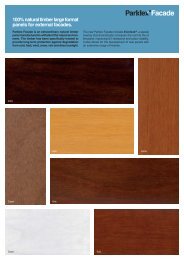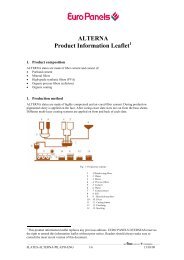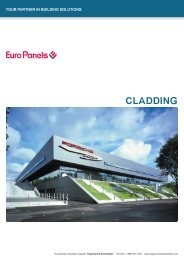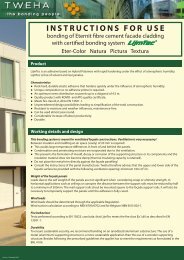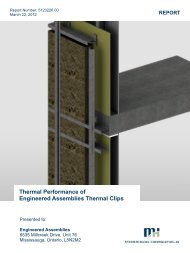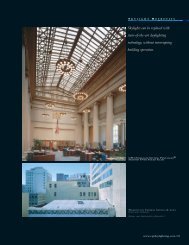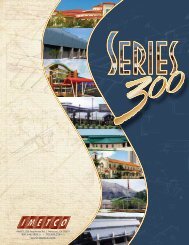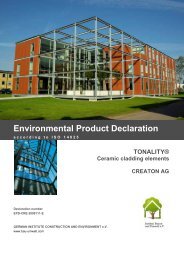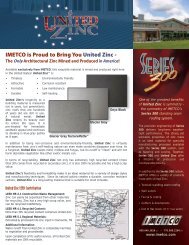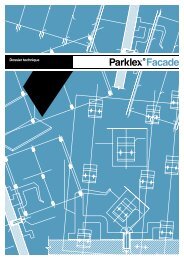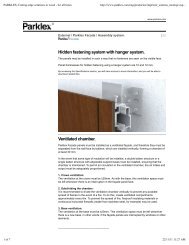Why does Fibre Cement Matter? - ENGINEERED ASSEMBLIES
Why does Fibre Cement Matter? - ENGINEERED ASSEMBLIES
Why does Fibre Cement Matter? - ENGINEERED ASSEMBLIES
Create successful ePaper yourself
Turn your PDF publications into a flip-book with our unique Google optimized e-Paper software.
Non Fibrous Materials: The specific materials used in addition to Portland <strong>Cement</strong> in modern fibre cement depend on the properties intended in the final product. There are two main categories of cellulose fibre cement -‐ low temperature cured (commonly known as air cured) and high temperature or autoclave cured. Air cured formulations will usually contain large amounts of Portland cement combined with very finely divided materials such as clays, Silica fume, ground limestone or fly ash. Autoclaved formulations will normally contain finely ground silica with other finely ground minerals and lesser quantities of cement all. With the exception of clays and silica fume that may have particles size of 2 μm or less, non-‐fibrous materials typically average around 50 μm in diameter the same size as Portland <strong>Cement</strong>. This is important in the formation of films. Summary This is a taste of the manufacturing process. The complete report is available. As the Hatschek process has been around for some time, engineers have continued to reform and improve the process. The intent of providing some of this detail is to show that there is much more to this than preparing a cementious material and allowing it to cure. The result of this innovation is that fibre cement is a thin, light weigh, but extremely tough material for cladding purposes. Source: Formation of Films on Hatschek Machines Tony Cooke M.App.Sc, M.R.A.C.I., M.A.I.Ch.E. Building Materials and Technology Pty Ltd. Australia for distribution, please contact EA 14 at 905 816 2218



